How to make the ultimate tomato spaghetti
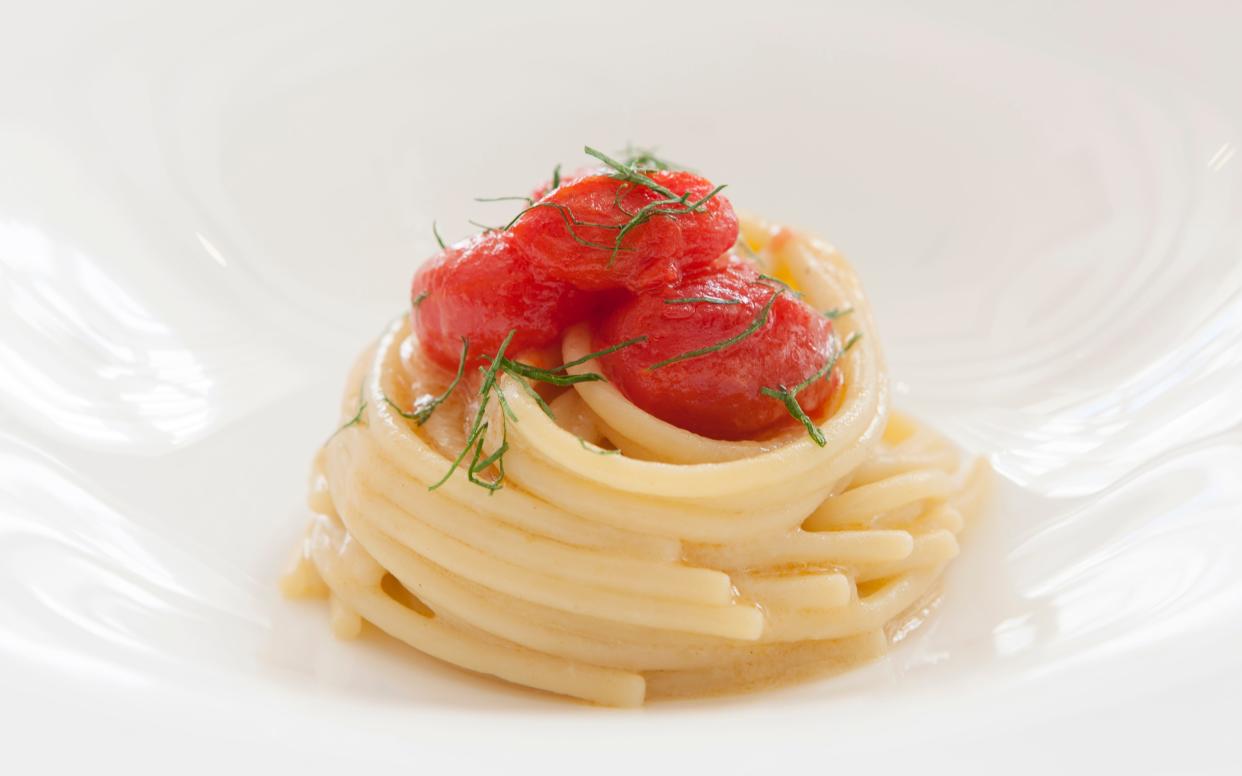
When I heard I was to be making tomato spaghetti during my cooking class in Umbria my heart sank, a little. I'm no Hartnett, but I can knock up the Italian basics. Or so I thought. Then I met Valentino Palmisano, chef at the Palazzo Seneca, Norcia, the gastronomic capital of Umbria, and, he says, creator of the 'world's best spaghetti tomato'.
The 24-room Palazzo Seneca hotel and its restaurant, the Michelin-starred Vespasia both re-opened recently, after the earthquakes which hit Norcia and surrounding regions in August and October 2016, the fiercest of which which measured 6.6 on the Richter scale.
All that presently remains of the basilica of San Benedetto in the main square is its 14th-century facade, one glorious stained-glass window and some crumbling walls; Norcia's ancient perimeter is still jagged and uneven.
The 16th-century Palazzo was, miraculously, relatively untouched. Meanwhile, much of the rest of the town is being rebuilt, albeit slowly and very carefully (understandable, given its age and historical importance), and its inhabitants are keen to welcome tourists back.
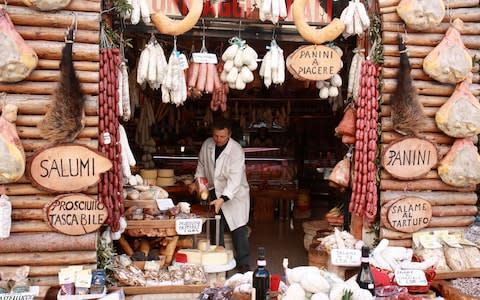
And, if you love food, the town and surrounding countryside are well worth exploring: Norcia is so synonymous with all things piggy that pork specialists are known as norcineria throughoutItaly. The town - with its excellent butchers, their exterior walls studded with shaggy boars' heads, interiors an Aladdin's cave of salumi and sausage - is a paradise for pork lovers; the countryside a haven for truffle hunters.

Palmisano, formerly of The Ritz-Carlton, Kyoto, took over as Vespasia's head chef post-earthquake. It was a leap of faith since, at that point, the town was still a 'red zone' and out of bounds to the public and the restaurant had yet to re-open. It was this apparently simple tomato spaghetti (a bold move, in a town famed for its meat) that won him the job, Palmisano told me.
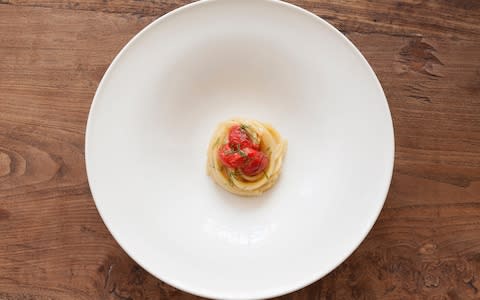
'My spaghetti tomato is the best in the world because it has its own identity; it has a spirit,' Palmisano said, as he chopped tomatoes in the kitchen of Vespasia. I looked again at the ingredients in front of me: tomatoes, basil, olive oil. All delicious, but all pretty standard. But once we started to cook it quickly became apparent this was no ordinary tomato sauce.
'It took me three months to create the clear tomato sauce,' Palmisano explained. 'And six months in total to perfect this recipe.' Palmisano showed me how to distill the essence of tomato from his carefully sourced ingredients (full recipe below); this transparent, pale-orange consommé is then encouraged to absorb into the spaghetti.
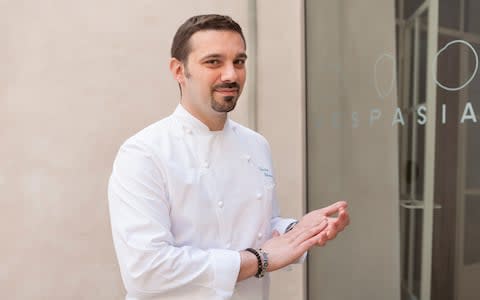
The pasta is thick, rough in texture and consequently more porous, allowing it to suck up even more of that tomatoey essence. The extra-long spaghetti made to a traditional recipe specially for Palmisano; the olive oil he uses costs 56 euros a litre; the dolce miele and ramati tomatoes are perfectly ripe and juicy.
But don't worry if you can't find the 'right' tomatoes or don't wish to use the same olive oil; the chef insists his recipe is simply a blueprint, which you can adapt using your own ingredients. Good tomatoes from the garden or supermarket and your favourite olive oil are all acceptable substitutes.
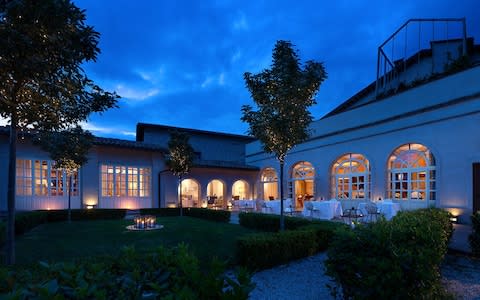
Plated, the world's best spaghetti tomato was pretty but plain: a tidy swirl of basil-flecked spaghetti topped with three or four quarters of scarlet tomatoes, and a light dusting of parmesan.
In the mouth, though, it was intense, zingy, bursting with the essence of tomato. The tomato topping was the least tomatoey part of the dish; the spaghetti itself, soaked in that sauce, was a revelation. Palmisano had infused the strands with the essence of summer: rich, lush, sweet, a tiny bit tart. Here's how you make it.
Spaghetti tomato
Serves four as a starter
INGREDIENTS
800g tomatoes (Ramati, if you can get them)
90g celery, chopped
40g shallot, chopped
60g carrot, chopped
Half a clove of garlic, chopped
15g of basil stems, chopped
250g water
3g salt
For the pasta
360g Regina dei Sibillini (or the best quality dried spaghetti you can find )
20g extra virgin olive oil (Eccolo)
5g parmesan 'Vacca Rossa' 36 months
2g small basil leaves
160g cherry tomatoes (Dolce miele, if you can get them)
METHOD
To make the tomato water, place all the ingredients in a mixer and blend until smooth.
Transfer the mixture to a saucepan and simmer until the temperature reaches 86° C (use a thermometer).
Line a strainer with kitchen paper and filter the tomato mixture through. This should take a couple of hours. The liquid that filters through - your tomato water - should be transparent with a subtle pale yellow tinge.
Once your tomato water is ready, drizzle a little extra virgin olive oil into a pan and lightly fry the Dolce miele cherry tomatoes for less than a minute. Once softened a little, remove them from the heat and keep warm.
To make the pasta, cook the spaghetti in a salted water for half the time recommended on the packet, then strain and place into another saucepan with some of the tomato water on a medium heat. When all the water is absorbed by the pasta, add more, until all the tomato water is absorbed into the spaghetti.
Add a drizzle of extra virgin olive oil and remove from heat.
Plate the spaghetti, place the pan-fried tomatoes on top and finish with a little finely chopped basil and a sprinkle of grated parmesan.

Relais & Chateaux Palazzo Seneca has rooms available from €160 per night on a B&B basis, based on two sharing. For more information visit palazzoseneca.com or call +39 0743 817434.
Cooking lessons are available from €100 per person and they last approximately 2 hours.

 Yahoo News
Yahoo News 
